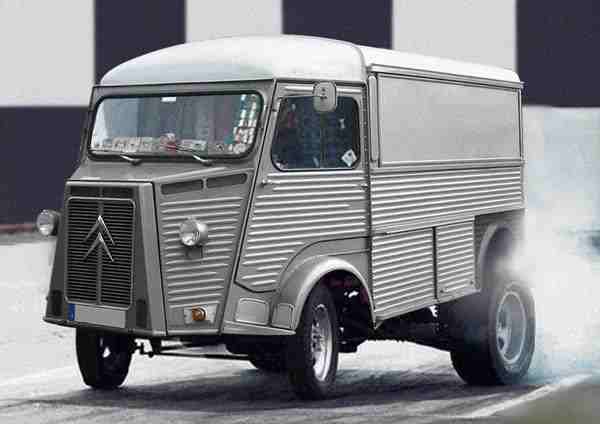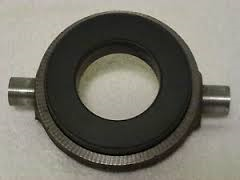Engine options for a Citroen H Van.
We can supply rebuilt engines or fit our famous Ford Pinto engine transplant.
The engine fitted to the 1940's H van is a 1,911cc petrol engine in a low state of tune. It is low powered but very sturdy.
The very first engines had White Metal big end bearings, not removable shells. Some of the late 50's early 60's engines we have rebuilt have had Conrods with Shell Bearings, like the post 1962 vans.
By the mid 1950's the engine had gone through several improvements, by the late 1950's it had become more reliable and economical.
In 1963 it took another step forward in design and this engine with the Alloy head is also a good engine. It had a redesigned stronger Crank with Shell Big end Bearings. The Main Bearings were also redesigned for lower cost and these are around £60 as oppossed to nearly £400 for the early engine bearings which are also becoming hard to source.
However, this later engine requires greater care and if you expect a 50 year old engine to be reliable without having new gaskets, you will be disappointed as Gaskets only have a 20 - 30 year life. This engine is more prone to Head Gasket failure and leaking from the bottom of the water jacket/liner seal which is often mis-diagnosed as Head Gasket failure.
This is not from any weakness in the engine, just unrealistic expectations on the part of the owners. If the Head Gasket is replaced the Cylinder Liner bottom seals MUST also be replaced and the seal surface must be absolutely perfectly clean. If not repeat symptoms of Head Gasket failure will be experienced very quickly. The correct antifreeze, with rust/corrosion inhibitors, must be used and changed every two years.
Once the engine is rebuilt properly it will last for 20 + years if serviced correctly with Oil changes at the right intervals. They are very, very sturdy Motors. The reputation for breaking down is not from a weak Engine, but tired ancillaries like Starter Motor, Distributor, Carburettor, etc which had a design life of 20 years, yet people expect them to be faultless after 50 years. H van reliability can only be engineered by rebuilding the items to as good as new.
Around 1964 a Diesel engine was introduced that was by any standards, appalling. Although a later improved diesel variant was introduced, it was still poor.

We have had enquiries from from people suffering repeat 'head gasket' failure, at least this was their diagnosis because Water and Oil were mixing.
They had removed the Cylinder Head, put on a new gasket, had the Head skimmed only to suffer the same issue, because the Top of the Cylinder was not where the issue was, but leaks at the base of the Cylinder Liner. The circular gaskets disintegrate after more than 30 years leading to symptoms of Head Gasket failure.
When removing the head you MUST also remove the Cylinder Liners to Clean the Cylinder Liner Seat in the Engine Block AND fit a new Gaskets into the Block where Cylinder Liner sits before reinserting the Cylinder Liners. It is essential The photo below shows the seats cleaned ready for new circular gaskets :
Our Engine Rebuilds:
The Engine is first Stripped and Cleaned. This is the bottom of the Block(upside down view) after stripping and cleaning.
Clutch Set-up on each engine removal.
When refitting the Engine you must go through a Clutch Cover set-up each time the Engine is apart or if the Clutch Disc is replaced.
Slacken the Clutch Cable so the Clutch actuation lever is free.
Assemble the box to the engine and check that the Release Bearing (see photo below) moves freely and has plenty of Carbon Thrust material remaining. The Carbon ring should protrude out of the steel outer retainer by between 3mm and 7mm. The Clutch thrust Bearing can wear quickly if the Driver sits with his foot on the Clutch at Traffic Lights. Always take it out of Gear and let your foot up off the Clutch as soon as you can when stationary.
Check the Thrust Bearing contacts the Clutch Cover Face about 8mm from rest, yet doesn't allow any Clutch slip.
To adjust this clearance unpeen the three screws on the Clutch cover, to release the Lock nuts, then turn the adjusting nuts to gain the correct clearance.
Each screw must be adjusted the same, measure the distance EXACTLY.
The aim is to get the Clearance between the Clutch thrust bearing and the Clutch Pressure Plate/Cover to a relatively small value so the Clutch fully disengages, yet not allow the Cover Spring Pressure to be too weak that the Clutch slips.
We are seeing a lot of Clutch issues on heavy vans. Although the H van was designed to have a load capacity up to 1600kg it was never envisaged it would be that loading ALL the time as most delivery vans ran around half empty for much of the time.
A van with a heavy Stainless Steel fitout and a lot of Catering equipment is up near or over the maximum capacity much of the time. There are pretty punishing fines and points handed out to van Drivers over the Plated weights which are bad enough, but the impact on your insurance is worse.
